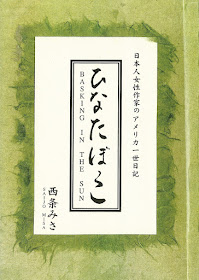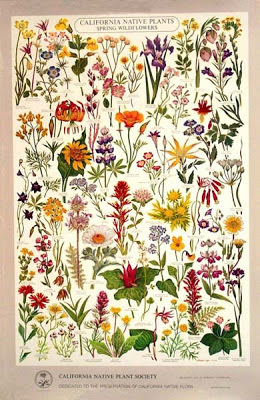Asano Miyata was born in 1891 in Tokushima, to a family that ran a successful business fermented and preparing foods made from soybeans, and she shared with her children memories of the giant wooden vats of shoyu being tended by men with long poles to stir the dark brew. She graduated from Tokushima Kojo before beginning her career as a schoolteacher in a small fishing village. It was a long ways from where she lived, requiring her to walk several miles to and from the village, early evidence of a sturdy endurance for traveling by foot, and in solitude along mountain trails, which also had a later effect on her Nisei children's attitudes towards nature. Remarkably, she then accepted an opportunity to teach schoolchildren of Japanese businessmen in far-off Hong Kong, and remained in this position for several years before returning to Japan.
As a result of the establishment of universal education in late Meiji- and Taisho-era Japan, most Japanese were almost entirely literate — far more so than the average white American of their period. The only career acceptable for Japanese women was in education, however, women were forbidden to enroll at Japanese national universities. So in many cases, those who wished to continue their own studies found places at Christian schools or with the help of Christian missionaries, which ultimately facilitated a familiarity with and embrace of Christianity. Asano Miyata was one of the intellectual women of her time whose studies led her to marry an overseas Japanese. Because of their extensive schooling, these women scholars often remained single into their early to mid-20s, which was considered too old for a respectable bride in Japan. Thus, if they wished to marry, their only remaining option was to agree to unite with Japanese immigrant men.
Satoru Saijo was born in 1878 in Kumamoto prefecture and attended a Christian missionary school as a child where he was taught basic English. Travel was in Satoru's blood, luring him first to San Francisco and further on to excursions throughout the US in a variety of occupations, ranging from houseboy to ship crew. By 1909, he was working as a domestic for the Albert Holden family, who acknowledged Satoru's potential by arranging for enrollment at Kenyon College, with all expenses paid. From Kenyon, Satoru went to Drew Theological seminary in New Jersey, intent on becoming a Christian minister. A small photograph from circa 1920 shows Satoru Saijo standing in front of the Santa Barbara Japanese Congregational Church, where he presided as minister. He was later transferred to Los Angeles and eventually became a junior pastor at Union Church.
As it happened, the senior pastor was a distant relative of a thoroughly modern woman by the name of Asano Miyata, and a marriage arrangement was made. In 1919, Asano arrived as a picture bride in Los Angeles. Satoru was soon placed as pastor of a church and congregation of Japanese farming families in rural Montebello in the San Gabriel Valley. The church had a Japanese school attached to it, a regular necessity for the Nisei children. Asano was immediately installed as its instructor and remained an esteemed pillar of the Japanese American community for years to come. Following the market crash in 1929, which mired the country in economic depression, Satoru gave up the ministry entirely and set about a new vocation as a farmer, despite his total lack of experience. It was during those dire financial and emotional years that Asano adopted the pen name of "Misa" Saijo and began publishing her essays, writing whenever she had a spare moment.
As her son Albert recounts, "I see her desk with neat squared off manuscript paper covered with her fluid hand— scattered pages filled with revisions & additions— her desk was Arts & Crafts style in oak with drawers & built in shelves facing sideways at each end—at her desk writing she had a power of concentration which was hard to break— she was writing about what was happening around her— from her own point of view— she was now over 10 years in America—She was in a country where she understood neither the culture nor the language—she spoke hardly a word of English—she made no effort to learn English— she was in a country whose white majority actively discriminated against her kind…"
What also mattered to Asano Saijo was her haiku. Before the war, local haiku societies were found throughout California. Through poetry, the Issei invented new meanings and expressions to describe their immigrant experiences, reflecting the imagery, feelings and sensibilities of an often bewildering culture so far from home and the familiar. "Tachibana Ginza," was one of numerous haiku journals published pre-war, and was run by a USC graduate, poet and farmer named Tsuneishi. It was said that when he drove groups of local haiku poets to larger meetings in Los Angeles, Tsuneishi had an odd habit of taking his right hand off the wheel to snap his fingers at regular intervals, as though he were marking time to a stanza of poetry, which drove Asano mad with worry. By the late 1930s, "Misa" Saijo was writing more than ever. One night, the Japanese schoolhouse burned down in the middle of the night, likely of arson as relations between the Japan and the United States rapidly deteriorated.Immediately following the bombing of Pearl Harbor, Satoru and Asano took all of their Japanese books, magazines and papers related to their community affairs, threw them into the garbage pit in the back yard and set them on fire. While they were spared arrests by the FBI, soon enough, they were forced into the Pomona Assembly Center and later, Heart Mountain, Wyoming. Asano took advantage of the idle time that camp provided to indulge in her writing and as was the fad, to hunt dinosaur gullet stones. Ironically, incarceration brought poets from all parts of the West Coast into Heart Mountain; as a result haiku clubs at all ten concentration camps flourished as the Issei sought blindly to put their experiences and complex emotions into a form. Tragically, none of Asano's writings from this era survived the repeated moves that took place after camp. They finally returned to Los Angeles around 1950 and bought a house near USC. When the McCarren Act was passed in 1952, Asano made her first genuine effort to learn English, and both she and her husband succeeded in attaining U.S. citizenship.
After Satoru passed away, Asano, now in her late sixties, finally made the pilgrimage back home to Tokushima after a thirty-seven year absence, although she recognized almost nothing of the town she had left behind beyond the mountains and rivers. All three children had settled in Northern California following the war, and although she maintained residence in Los Angeles, she also made frequent visits to partake in excursions amongst the redwoods and cedars that covered the rugged northern coastline. Whatever it was that she channeled to build her own literary career, she passed on to her three children: Gompers, Albert, and Hisayo, all of who led fascinating literary and artistic lives.
In her final years, she finally moved to Mill Valley, bringing her life's work with her, and immediately began compiling a book of her essays, short stories, and haiku. Once the task of editing and revising was complete, Asano laid aside her pen and took to bed. She passed in 1966 in the home of her son Albert, at the age of seventy-five.
A limited edition of Asano Saijo's compiled work, Hinatabokko (Basking in the Sun), was published in 2002 by her family. Her son Gompers spent his own final years scouring the archives at UCLA piecing together his mother's essays from newspaper archives along with her own transcriptions and editions. Currently, Hinatabokko is only available in Japanese, and is seeking a translator who can bring Asano's Issei perspective of Los Angeles, of immigrant life and politics, of family, language, and learning to light.
****
My thanks to Greg Robinson, whose research and column, THE GREAT UNKNOWN AND THE UNKNOWN GREAT in the Nichibei Times provided information on early Issei women's education.


























